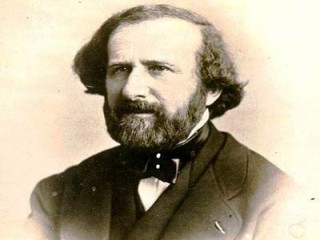
Hippolyte Fizeau biography
Date of birth : 1819-09-23
Date of death : -
Birthplace : Paris, France
Nationality : French
Category : Science and Technology
Last modified : 2011-06-21
Credited as : Physicist, Doppler effect,
Hippolyte Armand Louis Fizeau was born in Paris on Sept. 23, 1819, the son of a wealthy physician and professor at the Faculty of Medicine in Paris. Young Fizeau received his secondary education at the College Stanislas and first wanted to pursue a career in medicine, but because of poor health he had to discontinue regular attendance of classes. After a lengthy journey had restored him to health, he turned again to scientific studies. This time, however, he did not work for a degree, and instead of medicine he concentrated on physics.
It was mainly the experimental verification of theories that interested Fizeau, and he soon had a laboratory equipped for himself at home. His first achievement was an improvement on the daguerreotype process, a method discovered by Louis Daguerre in 1839 to produce photographic images. Fizeau substituted bromine for the iodine used by Daguerre. Through his work Fizeau developed a friendship with Leon Foucault, an enthusiast of the art of the daguerreotype. Together they collaborated to perfect the art for the use of celestial photography. The first authentic photograph of the disk of the sun came through their combined efforts.
It was in the field of optics that Fizeau earned a lasting reputation. The inspiration came from Francois Arago, who looked for a decisive test between the corpuscular and wave theories of light. If the wave theory was true, the velocity of light had to be greater in moving media, such as water flowing in a tube. The project implied the working out of a terrestrial method of measuring the speed of light, and Arago suggested that this could be done by using a rotating mirror. Fresnel and Foucault began to work together on the project, but the actual measurements were carried out individually. Meanwhile, Fizeau hit upon the cogwheel method of measuring the speed of light and by September 1849 obtained the value of 315,000 kilometers per second. His measurements with the rotating mirror were communicated to the academy in May 1850, almost simultaneously with those of Foucault. During the intervening months Fizeau had also succeeded in measuring the change of the velocity of light in a rapidly flowing column of water, which greatly strengthened belief in the wave theory of light.
In addition to the work on optics, Fizeau also established the velocity of electricity in wires, corresponding to one-third of the speed of light. He did valuable work in the development of induction coils, in the application of the Doppler effect in astronomy, and in the utilization of optical wavelengths for precision measurements.
Fizeau never held professorships but was elected to the Academy of Sciences in 1860. He died after a long illness in Venteuil near Jouarre on Sept. 18, 1896.
















